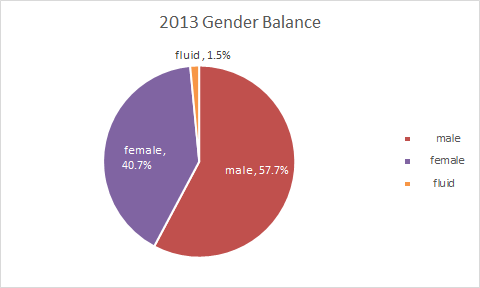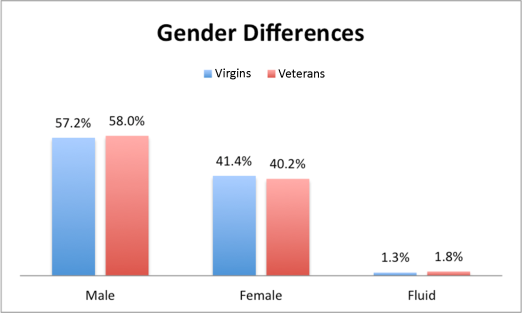In an earlier post, we compared income across burner populations, comparing veterans and virgins – for this post we focus directly on the number of years burners visited the Playa (data on regional events coming soon).
Burners were asked two similar questions about their years on the Playa:
- How many times they’ve been to Burning Man
- How long since their virgin year
This method captures the proportions of virgins each year well as acknowledges those veterans who have been here since the beginning.
You’ll notice we replaced “zero” with “virgin” for both graphs. Virgins made up 40% of the population sampled.

For the number of burns attended, 20% of burners surveyed were visiting for their second year, followed by burners in their fourth to fifth year of attendance (14%). There were a decrease of 11% in attendees coming for their third time.
24% of burners surveyed returned to the Playa within 1-2 years of their virgin year, but note that this graph does not show consecutive visits, just time elapsed since that first visit. 14% of burners reported 3-4 years since they were virgins, followed by 10% citing 5-7 years. This trend continues on our graph: the longer it has been since the typical burner’s virgin year, the smaller portion they make up of Black Rock City’s population.
Does this trend signify people “getting over” burning man? As they grow older, do veteran Burners find other commitments competing with an annual journey to the Playa? How do burners who attend intermittently affect this data?
Written by:
Tabitha Palmer aka Tabicat
Edited by:
Alison aka LoveAli



























